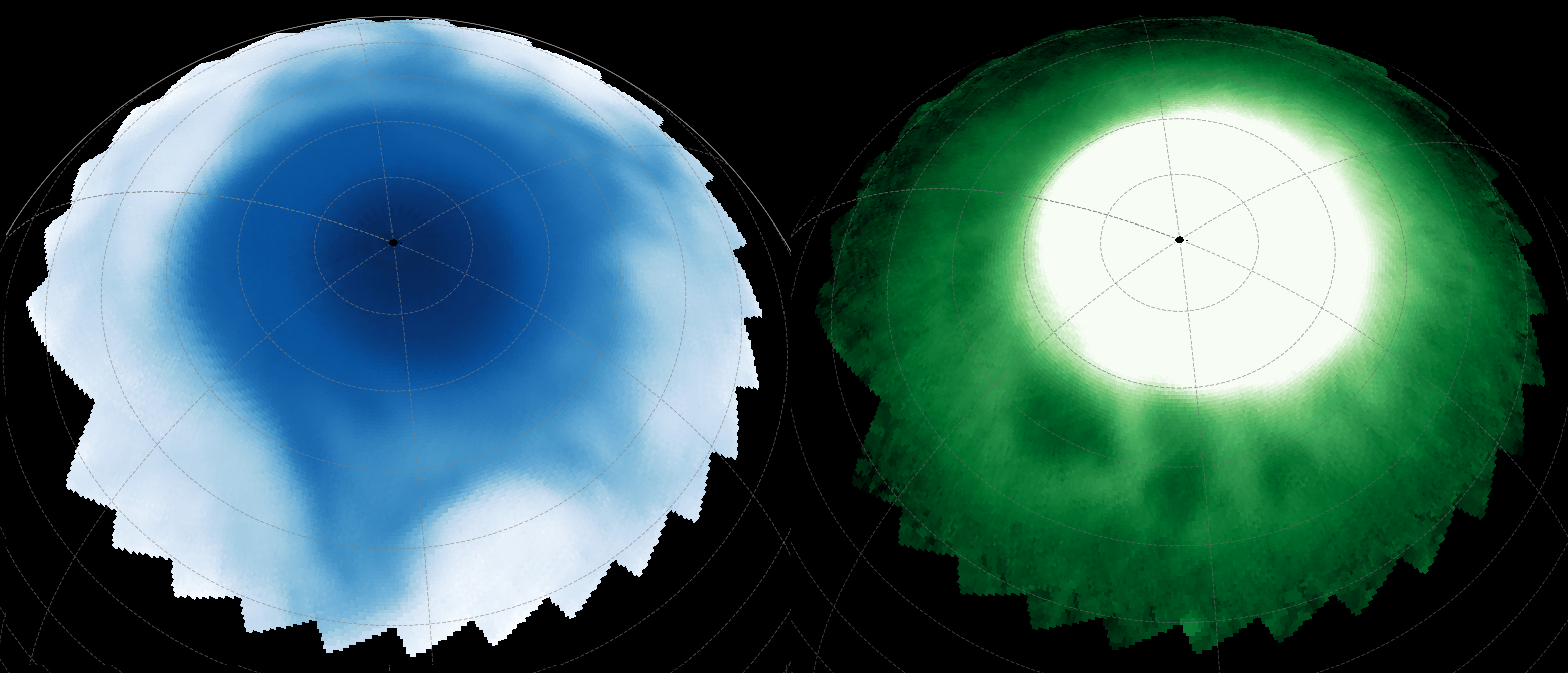
Dr. Michael Mann is at it again.
In his latest op-ed for the San Francisco Chronicle — melodramatically titled “I’m a climate scientist. Trump’s U.N. address is a fire hose of misinformation”— Mann plays the role of truth-teller, warning the public about Donald Trump’s supposedly dangerous rhetoric at the United Nations. According to Mann, nearly “every single word [Trump] spoke drips with mendacity.”
But when you peel back the grandiose framing, Mann’s essay reads less like the sober analysis of a scientist and more like the polemic of an activist. Worse, much of what he accuses Trump of doing — cherry-picking, exaggerating, revising history, and fearmongering — is precisely what Mann himself has perfected over the last 25 years.
So, if Mann wants to talk about “fire hoses of misinformation,” then let’s have that conversation. But let’s do it honestly.
Mann the Politician, Not the Scientist
Early in the piece, Mann frames Trump’s speech as part of an “anti-science agenda”. This is a rhetorical sleight of hand he’s used for decades: conflate “science” with “Michael Mann’s opinions about climate policy.” Anyone who questions him is not engaging in debate, but waging war on science itself.
This is not how science works. Science is not a political loyalty oath, nor is it a courtroom drama (though Mann has spent more time in the courts than most scientists). It is about predictions, testing, and falsification. And this is where Mann’s own record collapses under scrutiny.
Mann’s Hurricane Prediction Debacle
If Trump’s speech was a “fire hose” of questionable claims, then Mann’s hurricane predictions over the past decade are a burst water main.
Let’s look at his hurricane forecast record: (h/t to WUWT reader RelPerm)
2024: Predicted 33 storms. Actual: 18. Missed by nearly half.
2023: Predicted 15.9 ± 4. Actual: 20. Missed again.
2022: Predicted 14.9 ± 3.8. Actual: 14. Close only because the error bars are wide enough to drive a truck through.
2021: Predicted 11.9 ± 3.4. Actual: 21. Almost double the forecast.
2020: Predicted 19.8 ± 3.4. Actual: 30. Off by 10 storms.
2019: Predicted 10.9 ± 3.2. Actual: 18. Way off.
2018: Predicted 10.2 ± 3.2. Actual: 15. Miss.
2017: Predicted 15.3 ± 3.9. Actual: 21. Miss.
2015: Predicted 6.9 ± 2.6. Actual: 11. Miss.
2014: Predicted 9.3 ± 3.0. Actual: 6. Miss.
For a man so fond of lecturing others about accuracy, his record predicting storms is nothing short of embarrassing. You shouldn’t be predicting hurricanes to a tenth of a storm in the first place — the false precision itself is absurd. But to then miss repeatedly, year after year, while still posturing as an unimpeachable authority? That takes gall.
And yet, this is the same Mann who denounces others as “anti-science” for questioning climate models. If he held himself to the same standard he applies to Trump, he’d be out of the business.
The 1970s Cooling Scare: A Case of Selective Memory
Mann sneers at Trump for referencing the 1970s cooling scare, calling it a “myth promoted by climate deniers”. According to him, no serious scientists predicted global cooling — only a few isolated speculations about aerosols.
This is revisionist history.
In fact, a survey of the peer-reviewed literature from that era shows that roughly two-thirds of climate papers published between 1965 and 1979 predicted cooling. Titles like ““Brace Yourself for Another Ice Age” (Science Digest, 1973) and “The Cooling World” (Newsweek, 1975) weren’t invented by skeptics decades later; they reflected real scientific debate at the time.
Even America’s most trusted news anchor at the time, Walter Cronkite of CBS News, told viewers in 1972 that “British professor Hubert Lamb says that a new ice age is creeping over the Northern Hemisphere.”
Hilariously, the New York Times ran a contradictory 1992 headline: “Scientists Suggest Global Warming Could Hasten the Next Ice Age.”
To erase this history — to insist that “the scientific community never predicted cooling” — is itself misinformation. Mann’s own students, if they were taught honestly, could find these papers in any library archive.
Mann also recycles one of his favorite talking points: that Exxon’s scientists in the 1980s “secretly predicted the precise planetary warming that has occurred”.
This claim has been debunked time and again. Exxon’s internal memos explored scenarios — not predictions. They acknowledged wide uncertainty and explicitly cautioned that outcomes were speculative. That’s what responsible research does: it brackets possibilities.
But in activist hands, those memos have been twisted into prophecies of doom, weaponized as “Exxon Knew” talking points. What Mann calls “precise predictions” were in reality rough sketches. Presenting them otherwise is deliberate misrepresentation.
Perhaps the most brazen claim in Mann’s op-ed is that climate impacts are “actually exceeding the scientific predictions”.
Let’s check the facts:
Wildfires: U.S. burn acreage has declined dramatically since the 1930s. Global wildfire trends are downward.
Hurricanes: No increase in global frequency. Accumulated Cyclone Energy (ACE) fluctuates but shows no long-term rise.
Tornadoes: U.S. strong tornado counts (EF3+) have trended downward since the 1970s.
Floods: Deaths from flooding worldwide are at record lows thanks to better infrastructure and warning systems.
Mann ignores all of this. Instead, he cherry-picks every bad-weather headline and presents it as proof that the apocalypse is here. This isn’t science; it’s confirmation bias with a press pass. Mann ends with a flourish, warning that Trump is carrying out a “plan laid down by plutocrats and polluters”.
This is Mann’s trademark move: anyone who disagrees with him is not just mistaken, but corrupt. They’re oil-funded shills, anti-science zealots, existential threats to humanity. It’s an intellectually lazy way to shut down debate, and it’s a tactic he has used on fellow scientists as well as politicians.
The irony, of course, is that Mann’s own career has been a masterclass in politicizing science — from the infamous “hockey stick” graph (produced with dubious statistical tricks) to his ongoing legal crusades against critics. He is not the impartial defender of truth he pretends to be; he is a partisan warrior, wielding “science” as a cudgel.
In the end, Mann’s essay is not a sober takedown of Trump’s speech. It’s projection.
He accuses Trump of misinformation while spreading his own.
He mocks Trump for imprecision while missing his own forecasts by miles.
He accuses Trump of rewriting history while doing precisely that with the 1970s cooling scare.
He accuses Trump of serving plutocrats while himself serving the political machinery of climate alarmism, where research grants, media attention, and policy influence flow only to those who stay on message.
If the public today is drinking from a “fire hose of misinformation,” it’s because Michael Mann has had his thumb on the spigot for decades.
The Bottom Line
Michael Mann has built his career not on scientific precision, but on the art of narrative control. He takes a kernel of science, strips away the nuance, exaggerates the worst-case scenarios, and then uses the result to bludgeon his opponents. As I’ve always said, channeling Carl Sagan: Manntastic claims require Manntastic evidence. Yet, all the supposed evidence is only in his head.
This is not science. It’s advocacy dressed up as inevitability.
So, when Mann declares himself the authority on misinformation, we should remember: this is the same man whose hurricane forecasts flopped year after year, who rewrites climate history, and who has turned science into a weapon for political warfare.
If anything in this debate deserves to be called a “fire hose of misinformation,” it’s Michael Mann’s op-ed itself.



